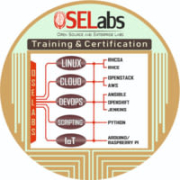

Find out what your peers are saying about BMC, Broadcom, Redwood Software and others in Workload Automation.


AutoSys Workload Automation is used by organizations for executing thousands of automations, managing server workloads, scheduling CP jobs, file transfers, enterprise batch scheduling, and ETL processing.
Organizations leverage AutoSys Workload Automation for running extensive workloads day and night, particularly important for banks, insurance clients, and enterprises needing robust job scheduling and file transfer processes. It is crucial for managing cross-functional dependencies with 24/7 automated triggers, batch processing, and centralized business process control, ensuring seamless operations across various servers and environments.
What are the most important features?AutoSys Workload Automation is widely implemented in banking for day and night operations, insurance client environments for reliable support, and enterprises for automated file transfers and robust job scheduling. Organizations centralize business processes and manage cross-functional dependencies effectively with its 24/7 automated triggers, supporting diverse industry needs through scalable and reliable performance.
Red Hat Ansible Automation Platform is a powerful network automation solution that allows organizations to handle every aspect of their application launch process within a single product. It enables users to share their automations so that teams within an organization can collaborate on various projects with ease. Ansible Automation Platform is designed to be used by all employees involved in the network automation process.
Red Hat Ansible Automation Platform Benefits
Some of the ways that organizations can benefit by choosing to deploy Red Hat Ansible Automation Platform include:
Red Hat Ansible Automation Platform Features
Reviews from Real Users
Red Hat Ansible Automation Platform is a highly effective solution that stands out when compared to many of its competitors. Two major advantages it offers are its automation manager and its comprehensive centralized GUI-based management interface.
MD J., a solution architect at STBL, says, “The automation manager is very good and makes things easier for customers with multi-cloud platforms.”
Aankit G., a Consultant at Pi DATACENTERS, writes, “We like the GUI-based interface for the tower. Before, we only had a command-line interface to run all the Ansible tasks. Now, the Ansible tower provides the complete GUI functionality to run, manage, and create the templates and the Ansible jobs. This includes the code and YAML file we can create. The GUI interface is the added advantage of this solution, including some integration with the different plugins.”
We monitor all Workload Automation reviews to prevent fraudulent reviews and keep review quality high. We do not post reviews by company employees or direct competitors. We validate each review for authenticity via cross-reference with LinkedIn, and personal follow-up with the reviewer when necessary.